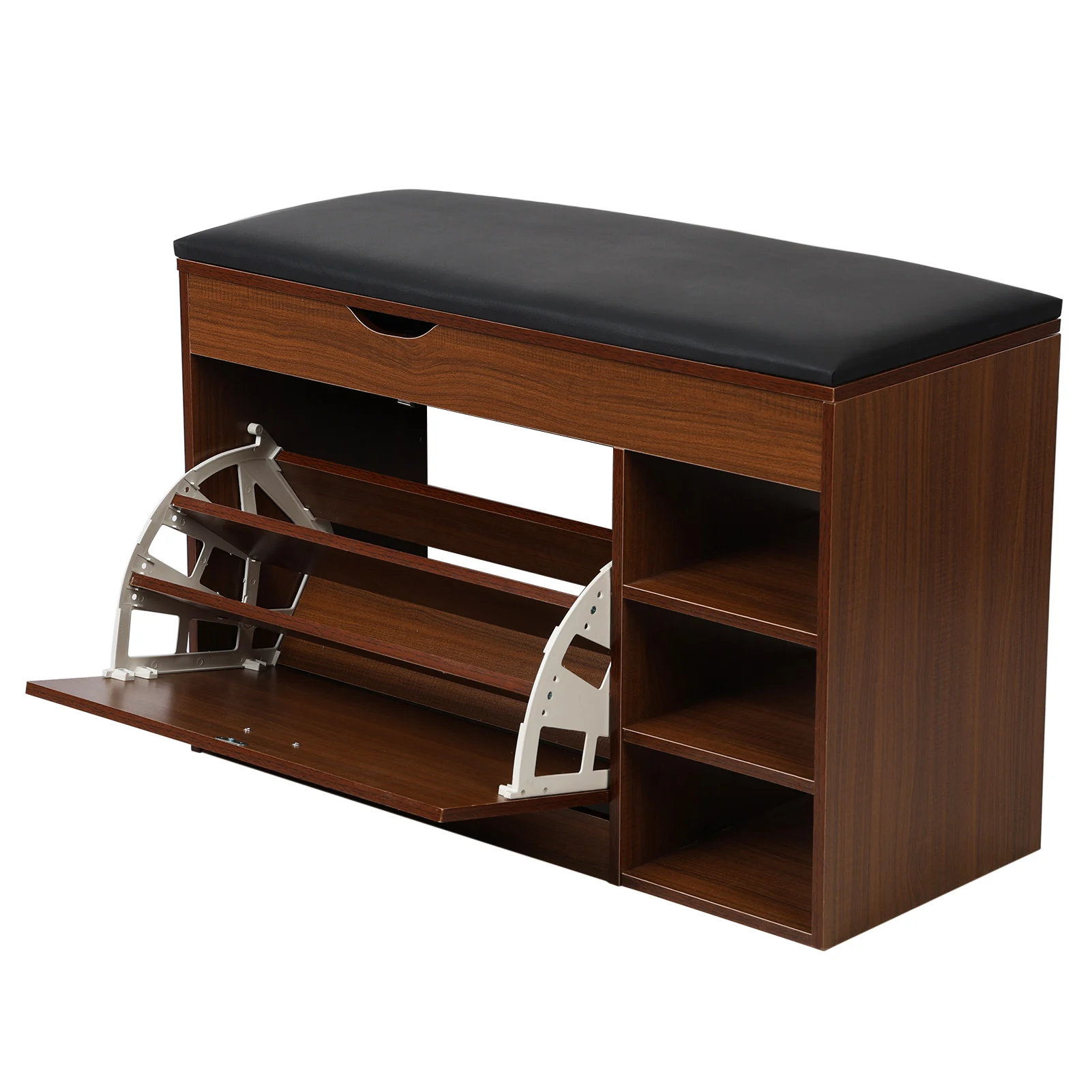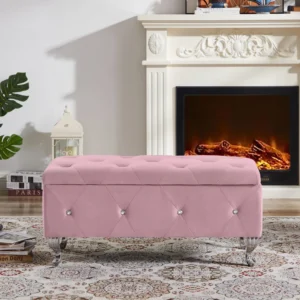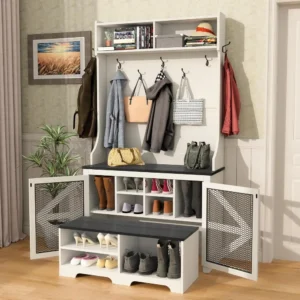Narrow hallways present unique challenges when it comes to furnishing. With typical widths of 3-4 feet (0.9-1.2 meters), finding furniture that fits without creating obstacles can feel like solving a puzzle. A well-chosen bench, however, can transform this tight space from a simple passageway into a functional and welcoming area of your home.
Hallway benches serve dual purposes that make them worth the careful consideration:
– They provide convenient seating for putting on and removing shoes
– They offer valuable storage space for everyday items
– They create a stylish focal point that enhances your home’s entrance
– They maximize efficiency in otherwise underutilized spaces
Selecting the right bench involves several important steps: taking precise measurements, determining your functional needs, exploring suitable bench types, choosing appropriate materials, and considering design elements that complement your home. With the right approach, even the narrowest hallway can accommodate a bench that offers both practicality and visual appeal.
At Nested Goods, we understand that function must meet style—especially in challenging spaces like tight hallways where space-saving bench solutions can make all the difference. Let’s explore how to find that perfect bench that fits your space constraints while maximizing small entryway areas with smart design choices.
Essential Measurements: The Foundation for Finding Your Perfect Fit
Before you start shopping for a hallway bench, accurate measurements are absolutely critical. In tight spaces, even being off by an inch can mean the difference between a perfect fit and a frustrating obstacle.
Start by gathering these key measurements:
- Width – Measure the wall-to-wall distance where you plan to place the bench
- Depth – Determine how far the bench can project into the hallway without impeding traffic
- Length – Measure the available horizontal space, accounting for any doors or other fixtures
- Height considerations – Note any windows, light switches, outlets, or radiators that could impact placement
The most crucial measurement is maintaining adequate walkway clearance. A minimum of 36 inches (91 cm) of clear passage is recommended for comfortable movement through the hallway. This ensures people can pass by easily, even when someone is seated on the bench.
Door swing paths require special attention. Measure the full arc of any doors that open into the hallway and mark these areas as no-go zones for your bench placement. Remember that doors need to open fully without hitting the bench.
Visualization techniques can prevent costly mistakes. Try marking the proposed bench dimensions with painter’s tape on the floor or create a cardboard mockup to get a real sense of how the piece will impact your space. This simple step can help you identify potential issues before committing to a purchase.
Most hallway benches range from 12-18 inches (30-45 cm) in depth. For particularly narrow hallways, look for slimmer profiles under 14 inches (35 cm) to maintain proper clearance. The complete guide to choosing compact bench options can provide additional insights for finding the right dimensions for your specific situation.
For those with particularly challenging spaces, our selection of narrow entryway benches offers specially designed options that maximize function while minimizing footprint.
Defining Your Bench’s Purpose: Balancing Function and Form
Once you’ve determined your space constraints, the next step is deciding what you need your bench to accomplish. In tight hallways, every piece of furniture must earn its place through utility as well as aesthetics.
Consider these common functional priorities for hallway benches:
- Primary seating – If your main need is a place to sit while putting on or removing shoes, focus on comfortable seat height (typically 17-19 inches/43-48 cm) and adequate seat depth
- Storage solution – For organizing shoes, bags, and seasonal items, evaluate different storage configurations based on your specific needs
- Design statement – When the bench serves as a focal point, material quality and design details become especially important
Storage configuration significantly impacts both functionality and appearance in narrow spaces:
- Open shelves provide easy access but display contents visibly (great for frequently used items)
- Cubbies offer semi-concealed storage with defined spaces for organization
- Drawers completely hide contents but require clearance space to open fully
- Lift-top storage maximizes capacity without requiring additional space for access
The visual impact of different storage types shouldn’t be overlooked. Open storage creates a sense of depth but can look cluttered if not kept organized. Closed storage maintains a cleaner appearance but can sometimes make the piece feel bulkier in a tight space.
When organizing a small entryway with a bench, consider how the items you need to store will affect your bench choice. For instance, if you need to store bulky winter boots, you’ll need different dimensions than if you’re primarily storing slim summer shoes.
Our collection of entryway benches with integrated storage offers various configurations that balance space efficiency with organizational needs, helping you find the perfect solution for your specific hallway challenges.
Bench Types Perfectly Suited for Narrow Hallways
Not all benches are created equal when it comes to tight spaces. Several specific designs address the unique challenges of narrow hallways while still providing functionality and style.
Slim-profile benches (under 14 inches/35 cm deep) are specifically designed for narrow passages. These scaled-down versions maintain seating functionality while projecting minimally into the walkway. Look for models with tapered legs that provide stability without visual heaviness.
Wall-mounted or floating benches offer significant advantages in tight hallways:
* They eliminate floor supports, creating an open feeling below
* Floor cleaning becomes much easier without legs to navigate around
* They can be installed at custom heights to suit your family’s needs
* Many models support surprising weight (up to 300 lbs/136 kg) when properly installed
Backless designs work particularly well in narrow spaces as they:
* Can be used from either side, offering flexible seating
* Create less visual bulk, making the hallway feel more spacious
* Often fit neatly under windows where taller pieces wouldn’t work
Open-base designs allow light to flow through, maintaining an airy appearance that helps prevent the hallway from feeling cramped. The visual transparency makes a significant difference in how spacious the area feels.
Compact storage benches utilize vertical space efficiently, with shoe storage located directly below the seating area. Some models even incorporate hooks or shelving above, creating a complete entryway solution with a minimal footprint.
Convertible or folding options provide flexibility for occasional use. These can be expanded when needed and tucked away or transformed when additional space is required.
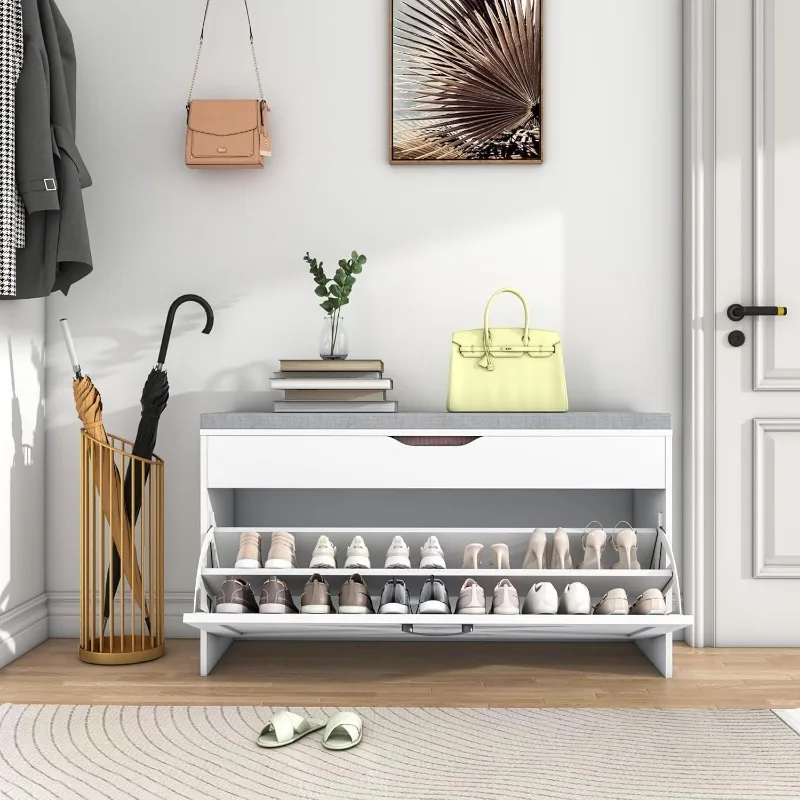
Exploring creative space-saving entryway ideas can help you maximize your hallway’s potential. For those with particularly challenging dimensions, our selection of small entryway benches offers specially designed solutions that prioritize both function and fit.
Material Selection for Durability and Style in High-Traffic Areas
The materials you choose for your hallway bench significantly impact both its longevity and how it contributes to your home’s aesthetic. Since entryways experience heavy traffic and frequent use, durability should be a primary consideration.
Wood options provide warmth and timeless appeal:
* Solid hardwoods (oak, maple, walnut) offer exceptional durability but may carry higher price tags
* Engineered wood products provide stability and consistent appearance at more accessible price points
* Various finishes from natural to painted allow for personalization
* Wood benches typically have weight capacities of 250-400 lbs (113-181 kg)
Metal constructions bring modern appeal and visual lightness:
* Steel frames create sturdy support with minimal visual bulk
* Powder-coated finishes resist scratches and corrosion
* Industrial or contemporary designs complement many home styles
* Metal elements often support more weight while appearing lighter
Upholstered elements add comfort and texture:
* Cushioned seats make the bench more comfortable for longer sitting
* Fabric choices can add color and pattern to the space
* Removable cushions offer cleaning convenience
* Weather-resistant fabrics work well for entries that face outdoor elements
Material combinations often provide the best of multiple worlds:
* Wood seats with metal frames balance warmth with contemporary style
* Upholstered tops with solid bases offer comfort without sacrificing durability
* Mixed material designs create visual interest in simple spaces
When selecting materials, consider the visual weight in relation to your space constraints. Darker, heavier materials can make a small space feel more enclosed, while lighter materials help maintain an open feeling. Our collection of modern storage benches for small spaces showcases how contemporary materials can maximize functionality while maintaining style.
For classic appeal that stands the test of time, explore our wooden entryway benches that bring warmth and natural beauty to even the most compact hallways.
Styling Your Bench to Enhance Your Hallway’s Aesthetic
Your hallway bench doesn’t just serve practical purposes—it’s also an opportunity to establish or enhance your home’s design aesthetic. The right style choice can make your narrow hallway feel intentional and polished rather than simply constrained.
Consider these popular design directions for hallway benches:
- Contemporary minimalist designs feature clean lines, minimal ornamentation, and often floating or open-base structures that create visual space beneath—ideal for making tight hallways feel less crowded
- Traditional styles incorporate craftsmanship details like turned legs, decorative molding, or classic forms that bring established elegance to your entryway
- Transitional benches blend traditional and contemporary elements, offering versatility that works with evolving home decor
- Industrial designs emphasize raw materials, metal components, and utilitarian appeal—often scaled appropriately for smaller spaces
- Scandinavian influences bring light woods, functional simplicity, and clean lines that work exceptionally well in narrow areas
Color strategy plays a crucial role in how your bench affects spatial perception:
- Light-colored benches recede visually, helping the hallway feel more spacious
- Strategic contrast can define zones without overwhelming the space
- Coordinating your bench color with adjacent rooms creates visual flow
- Natural wood tones bring warmth without dominating the visual field
In tight spaces, proportion becomes especially important. Look for benches with appropriately scaled details—oversized elements can quickly overwhelm a narrow hallway. Similarly, hardware and finishing details should maintain proportion with the overall piece.
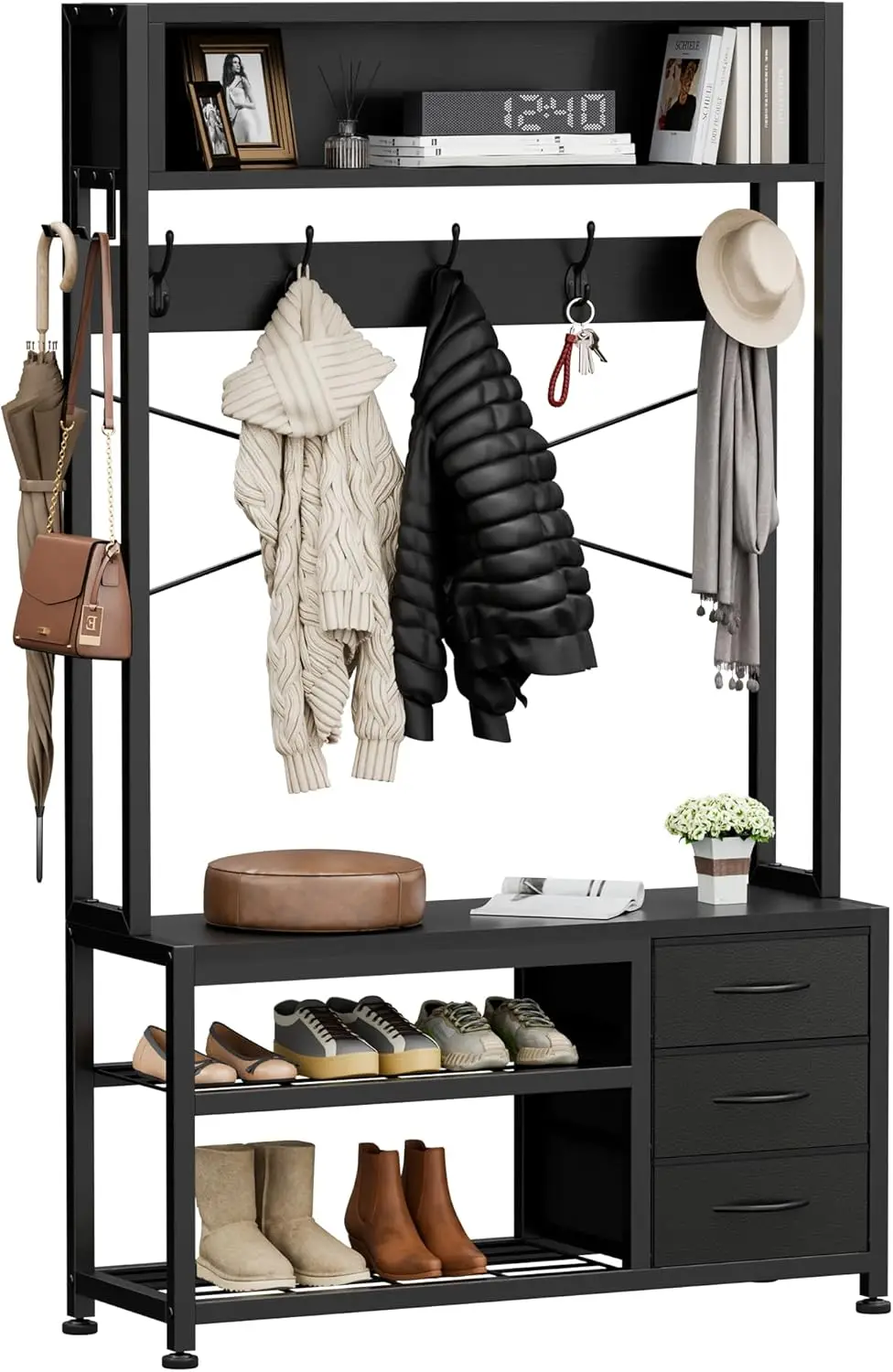
Finding space-saving entry benches for small homes means considering both visual impact and physical dimensions. The most successful hallway benches appear perfectly suited to their space rather than crammed into it.
Smart Installation: Maximizing Your Bench’s Potential in Limited Space
Proper installation ensures your carefully selected bench functions as intended without creating hazards or inconvenience in your narrow hallway.
Follow these placement guidelines for optimal results:
- Position your bench at least 24 inches (61 cm) away from doors to prevent interference with their operation
- Consider whether centered or offset positioning works better with your traffic patterns
- Evaluate the bench in relation to other hallway elements like light switches, artwork, or mirrors
- Ensure the bench doesn’t block heating vents or electrical outlets
For wall-mounted options, weight-bearing capacity is critical. Most floating benches require installation into wall studs rather than just drywall. Use a stud finder to locate proper mounting points and ensure you’re using hardware rated for at least 1.5 times the expected weight load.
Different wall types require specific hardware:
* Wooden studs: Lag bolts or heavy-duty wood screws
* Metal studs: Special hollow-wall anchors designed for metal studs
* Masonry: Concrete screws or expansion bolts with proper masonry bits
If your floors aren’t perfectly level (common in older homes), adjustable feet or strategic shims can prevent wobbling and ensure stability. Taking time to properly level your bench prevents stress on joints and maintains structural integrity.
When combined with other hallway elements, consider vertical relationships. A bench paired with a mirror should allow seated users to see themselves, while wall hooks should be positioned for easy access without requiring awkward reaching over the bench. Our guide to choosing the perfect bench with shoe storage provides additional insights on creating functional combinations.
Clever Accessorizing: Enhancing Functionality Without Adding Bulk
The right accessories can significantly enhance your hallway bench’s functionality without consuming precious space. In narrow areas, thoughtful additions make a substantial difference in usability.
Consider these space-efficient accessories:
- Slim cushions (1-2 inches/2.5-5 cm thick) add comfort without significant bulk and can be easily removed for cleaning
- Wall-mounted organizers positioned above the bench utilize vertical space for mail, keys, and small items
- Integrated lighting such as motion-activated LED strips under floating benches provide practical illumination without additional fixtures
- Complementary wall hooks installed at appropriate heights (typically 48-60 inches/122-152 cm from the floor) create vertical storage for coats and bags
Proportion remains crucial when selecting accessories. In tight spaces, oversized decorative elements quickly create visual clutter. Choose scaled-down accessories that complement rather than dominate the space.
Seasonal rotation strategies help maintain functionality throughout the year. Consider swapping heavier winter accessories for lighter summer items, or adjusting storage configurations to accommodate changing needs.
Organization systems that maintain a clutter-free appearance are especially valuable in narrow hallways. Look for contained solutions like baskets that fit within your bench’s storage compartments or discrete hooks that fold away when not in use.
Our entryway coat rack benches demonstrate how vertical and horizontal storage can be elegantly combined to maximize functionality in limited space.
Avoiding Common Pitfalls: Mistakes to Sidestep When Choosing a Hallway Bench
Even with careful planning, certain mistakes frequently occur when selecting benches for tight hallways. Awareness of these common pitfalls can help you avoid costly errors and disappointment.
Watch out for these frequent missteps:
- Ignoring precise measurements – Especially depth constraints that can make a hallway impassable when the bench is in use
- Prioritizing style over function (or vice versa) – The most beautiful bench fails if it doesn’t meet your practical needs
- Blocking natural pathways – Placing benches where they interfere with door swings or normal traffic patterns
- Selecting visually heavy designs – Bulky, dark, or solid designs that overwhelm narrow spaces and create a crowded feeling
- Underutilizing vertical space – Missing opportunities to incorporate storage above the bench
- Choosing inappropriate materials for high-traffic zones – Delicate finishes or difficult-to-clean upholstery that quickly shows wear
- Overcrowding with accessories – Adding too many decorative elements that create visual and physical clutter
These mistakes often result from focusing on the bench as an isolated piece rather than considering how it functions within the complete hallway system. Remember that in tight spaces, every element must work harmoniously with everything around it.
If you’ve already encountered one of these issues, solutions might include:
* Replacing bulky cushions with slimmer versions
* Adding mirror placement to create the illusion of more space
* Adjusting bench positioning to improve traffic flow
* Incorporating wall storage to remove items currently cluttering the bench
For more ideas on effective solutions, our collection of best small benches for entryways showcases designs specifically created to avoid these common problems.
Creative Solutions: Bench Ideas for Extremely Narrow Hallways
Some hallways present exceptional challenges due to their extremely limited dimensions. In these cases, standard solutions may not apply, and more creative approaches become necessary.
For particularly challenging spaces, consider these innovative options:
- Ultra-slim bench designs (under 10 inches/25 cm deep) that provide seating while projecting minimally into the walkway
- Corner bench utilization that takes advantage of often-wasted corner spaces at hallway junctions
- Niche or alcove optimization that recesses the bench into the wall rather than projecting into the hallway
- Half-benches or quarter-circle designs that fit specific architectural features while maintaining flow
- Wall-integrated solutions that appear built-in rather than added to the space
- Dual-purpose furniture like console table/bench combinations that serve multiple functions
Custom sizing becomes particularly valuable in unusual spaces. Consider adjustable designs or pieces that can be modified to fit specific dimensions. In some cases, repurposing furniture not originally intended as hallway benches—such as narrow console tables with added cushions—can provide elegant solutions.
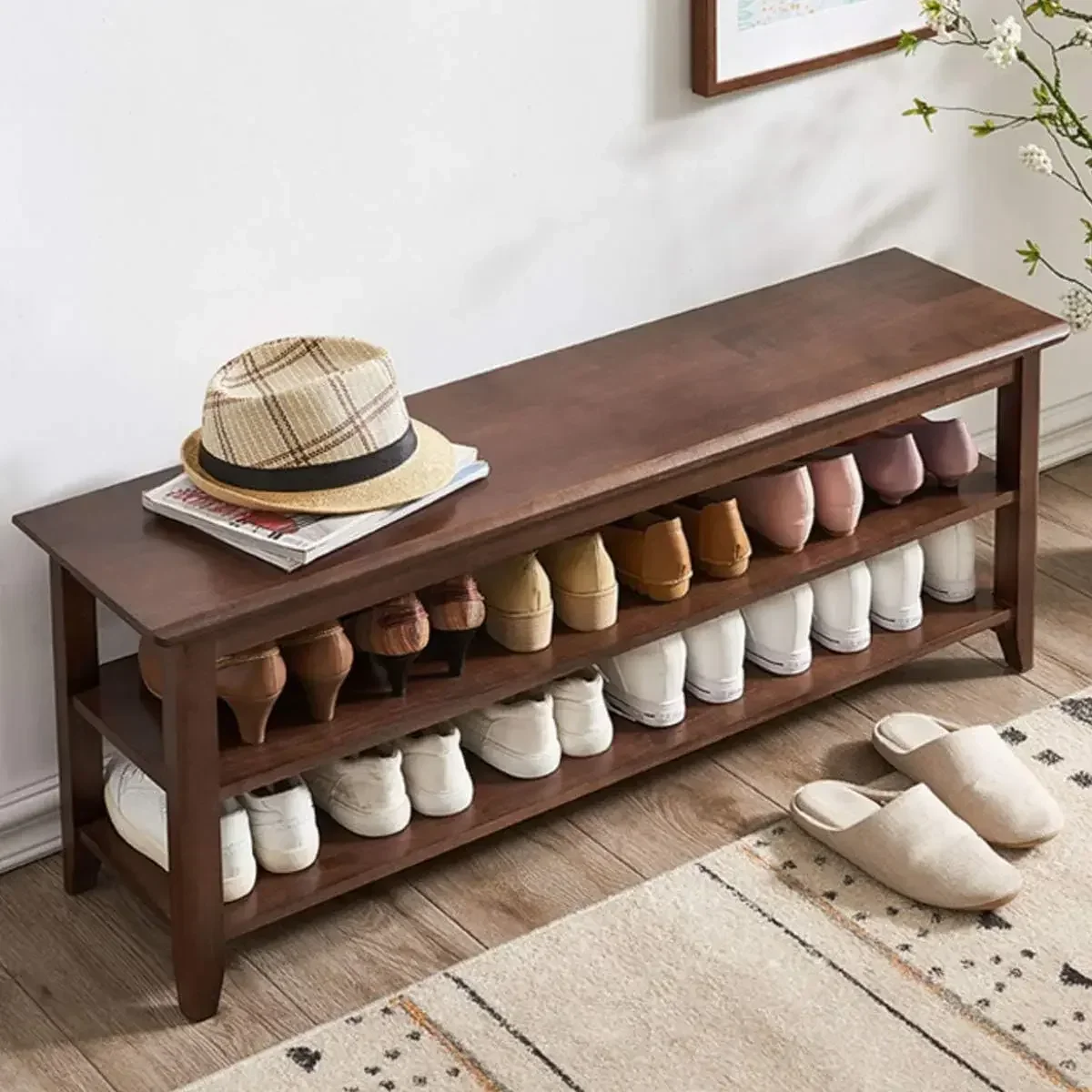
For homes with split levels or transitional spaces between floors, bench placement requires special consideration of traffic patterns and safety. In these instances, ensuring adequate clearance becomes even more critical.
Our corner entryway benches offer specialized solutions for awkward angles and challenging layouts, demonstrating how even the most difficult spaces can be furnished functionally.
Coat Rack Shoe Bench, Corner Entryway Bench, Corner Hall Tree, Shoe Bench for Entryway
$313.58 Select options This product has multiple variants. The options may be chosen on the product pageCorner Entryway Bench, Entryway Bench with Cushion, Modern Entryway Bench, Shoe Bench for Entryway
$476.34 Select options This product has multiple variants. The options may be chosen on the product pageModern Entryway Bench, Wood Entryway Bench, Wood Mudroom Bench
$497.69 Select options This product has multiple variants. The options may be chosen on the product pageEntryway Coat Rack Bench, Entryway Hall Tree, Farmhouse Mudroom Bench, Mudroom Bench with Shoe Storage
$805.09 Select options This product has multiple variants. The options may be chosen on the product pageEntryway Bench with Cushion, Small Entryway Bench
$466.79 Select options This product has multiple variants. The options may be chosen on the product pageBench with Hooks and Storage, Entryway Coat Rack Bench, Entryway Hall Tree, Mudroom Bench with Shoe Storage, Mudroom Coat Rack Bench
$793.73 Select options This product has multiple variants. The options may be chosen on the product page
Beyond the Bench: Creating a Cohesive Hallway Entrance System
The most successful hallway benches don’t exist in isolation but function as part of an integrated entrance system. By considering how your bench works with complementary elements, you can create a cohesive solution that maximizes both functionality and aesthetics.
Explore these integrated approaches:
- Complementary wall storage positioned at appropriate heights creates zones for different items while maintaining visual harmony
- Mirror placement not only enhances space perception but also serves the practical purpose of last-minute appearance checks
- Lighting considerations should include ambient, task, and accent options that highlight your bench area appropriately
- Flooring protection through strategically placed entry mats or runners prevents damage while defining the entry zone
Effective hallway zoning creates natural organization even in tight spaces. Consider dividing your entrance area into distinct functional zones: an initial “landing zone” for shoes and outerwear, a “pause point” for setting down items or sitting, and a “transition zone” leading to the rest of your home.
Seasonal adaptation ensures your hallway system remains functional year-round. Modular components that can be reconfigured or adjusted based on changing needs provide valuable flexibility in limited spaces.
The flow between your hallway and adjacent rooms significantly impacts how your entrance feels and functions. Consider sight lines, color continuity, and scale relationships to create harmonious transitions between spaces.
Our guide to space-saving corner benches demonstrates how specialized furniture can be integrated into complete hallway systems that maximize every available inch.
Tailored Solutions: Matching Bench Selection to Your Specific Hallway Challenges
Every hallway presents unique challenges that require personalized solutions. Here are answers to some commonly encountered situations:
Question: “Can I use a bench in a hallway under 30 inches (76 cm) wide?”
While challenging, it’s possible with ultra-slim designs. Look for benches under 10 inches (25 cm) deep and consider wall-mounted options that eliminate legs. Maintain at least 20 inches (51 cm) of clear passage. In extremely narrow hallways, consider whether alternative solutions like wall hooks with a slim shelf might better serve your needs.
Question: “How do I choose a bench for an L-shaped hallway?”
L-shaped hallways offer unique opportunities for corner placement. Consider corner benches specifically designed for these junctions, or use the corner as a natural break between different functional areas. Ensure that sight lines remain clear around the corner to prevent collision hazards.
Question: “What’s the best bench solution for a hallway with multiple doors?”
Map all door swing paths first, marking clear zones that must remain unobstructed. Look for shorter bench segments that can fit between doors rather than one long piece. Consider narrow console-style benches with minimal projection. Ensure no bench placement blocks access to any doorway or creates pinch points when doors are in use.
Question: “How can I incorporate a bench in a hallway with stairs?”
Safety is paramount near stairs. Maintain at least 36 inches (91 cm) of clear passage at all points. Consider placing the bench on the wall opposite the stairs rather than the same wall. If space allows, the area at the top or bottom of stairs (away from the immediate step) can often accommodate a bench without creating hazards.
By addressing your specific spatial challenges with targeted solutions, even the most difficult hallway can be transformed into a functional, welcoming entrance. The key lies in accurately assessing your unique constraints and selecting furnishings specifically designed to work within them.

